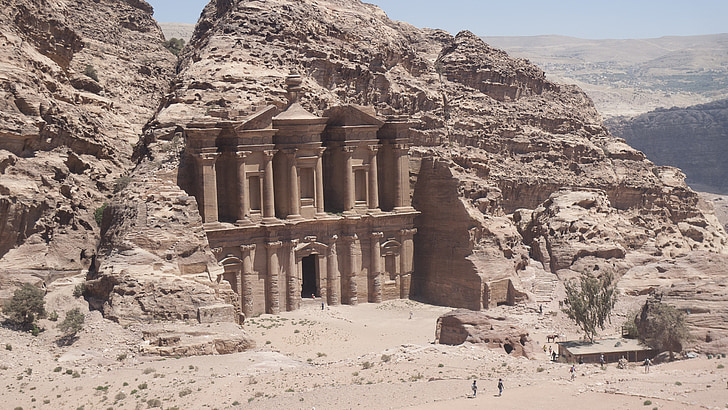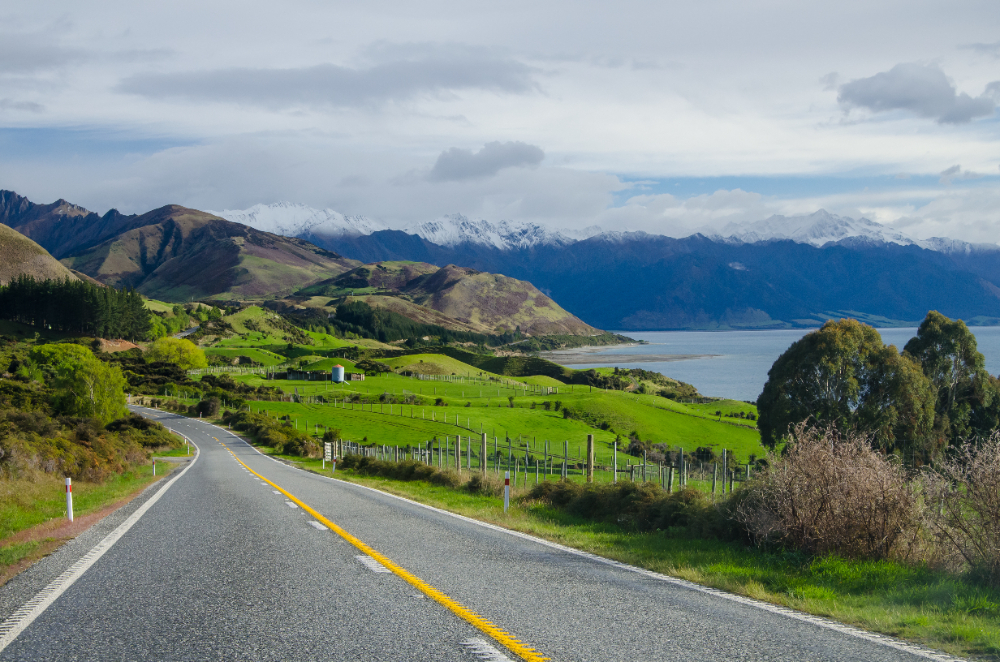Nestled in the heart of Jordan, Petra is a mesmerizing city that whispers tales of ancient civilizations and breathtaking architecture. This UNESCO World Heritage site has captivated travelers for centuries with its stunning rock-cut structures and rich history. Imagine wandering through narrow canyons only to be greeted by the magnificent facade of Al-Khazneh, also known as The Treasury. Each step you take feels like stepping back in time.
Whether you’re an avid historian, a nature lover, or simply seeking adventure, a trip in Petra offers something unique for everyone. As you prepare to explore this enchanting destination, get ready to uncover not just its wonders but also the stories etched into every stone. From practical travel tips to must-see sights that will leave you awestruck, join us on this journey through one of the world’s most iconic archaeological treasures.
Petra and its history
Petra, known as the “Rose City” for its pink-hued sandstone cliffs, dates back to around 5th century BC. Once a thriving trading hub, it connected ancient trade routes between Arabia, Egypt, and the Mediterranean.
The Nabataeans were the masterminds behind this architectural marvel. They carved intricate facades into sheer rock faces and developed sophisticated water management systems that allowed them to thrive in this arid environment.
As time went on, Petra flourished until Roman annexation led to its gradual decline. By the Middle Ages, it faded from public consciousness, hidden beneath desert sands for centuries.
Rediscovered by Swiss explorer Johann Ludwig Burckhardt in 1812, Petra began to capture imaginations once more. Today, it stands not just as an archaeological site but as a testament to human ingenuity and resilience against nature’s challenges. Each stone tells stories of those who walked these paths long before us.
The best time to visit Petra
The best time to visit Petra is during the spring and fall. From March to May, and September to November, the weather is pleasantly warm. This makes it ideal for exploring the ancient city.
During these months, daytime temperatures are comfortable. Nights can be cooler, so layering your clothing is wise. You’ll want to enjoy long walks without feeling exhausted by heat.
Summer brings scorching temperatures that can exceed 40°C (104°F). Exploring Petra under such conditions might not be enjoyable or safe.
Winter sees fewer tourists, but it can get chilly with occasional rain or even snow in January. If you don’t mind bundling up a bit, winter offers a unique experience with fewer crowds around those iconic rock-cut facades.
Choosing your timing wisely enhances your trip in Petra significantly; you’ll appreciate every breathtaking view more when you’re not battling extreme weather!
How to get to Petra
Reaching Petra is an adventure in itself. The ancient city is nestled in the stunning landscapes of southern Jordan, making it a must-see for any traveler.
If you’re flying into Jordan, Queen Alia International Airport in Amman is your best bet. From there, you have several options to get to Petra.
Buses frequently depart from Amman’s Abdali Bus Station and take around three hours to reach Wadi Musa, the town adjacent to Petra. This option is budget-friendly and offers a chance to mingle with locals.
For more comfort, consider hiring a private taxi or driver. This allows flexibility and can be tailored to your schedule.
Alternatively, guided tours often include transportation from major cities like Aqaba or Amman directly to the site. Many travelers find this convenient as it eliminates stress over logistics while providing expert insights along the way.
Must-see sights in Petra
Petra is a treasure trove of ancient wonders. The most iconic sight is the Treasury, or Al-Khazneh. Its intricate facade carved into rose-red rock leaves visitors in awe.
Next, explore the Monastery, known as Ad-Deir. This majestic structure stands tall and offers stunning views after a rewarding hike up the steps.
Don’t miss the Siq, Petra’s winding canyon entrance. Walking through this narrow gorge sets an enchanting tone for your adventure.
The Roman Theater showcases Petra’s rich heritage with its impressive seating for thousands. It’s a perfect spot to imagine past performances.
Venture to the High Place of Sacrifice for panoramic vistas that capture Petra’s beauty from above. Each site unveils different layers of history waiting to be discovered during your trip in Petra.
Tips for exploring Petra
Wear comfortable shoes. The terrain in Petra can be rocky and uneven. You’ll want to keep your feet happy as you explore.
Stay hydrated. It can get hot, especially during the day. Carry a water bottle and take breaks when needed.
Consider starting early or visiting late in the afternoon to avoid crowds. The golden light during sunrise or sunset makes for stunning photos too.
Don’t rush through the sights. Take time to absorb the atmosphere and appreciate the intricate carvings that tell stories from centuries ago.
Hire a local guide if possible. They offer insights you won’t find in guidebooks, enhancing your experience significantly.
Be mindful of local customs while wandering around this historic site. Respect sacred areas and always ask before taking pictures of people or their property.
Allow yourself some spontaneity; sometimes, unexpected detours lead to hidden gems throughout Petra’s fascinating landscape.
Cultural etiquette and customs
Visiting Petra is as much about the experience of its vibrant culture as it is about the stunning ruins. Understanding local customs can enhance your trip in Petra.
Dress modestly, particularly when visiting religious sites. Long sleeves and skirts are recommended to show respect for cultural norms.
Greetings typically involve a handshake, but it’s best to wait for locals to extend their hand first, especially with women. A friendly smile goes a long way too.
When interacting with vendors or guides, haggling is customary but should be done respectfully. Show appreciation for their craft and engage in light conversation; this builds rapport.
Always ask before taking photographs of people, especially in rural areas where traditions may differ from urban settings. Respecting personal space and privacy is crucial during your visit.
Try sampling traditional foods offered by locals; sharing meals fosters connections that enrich your journey through this historical wonderland.
Recommended accommodations and dining options
For a memorable trip in Petra, choosing the right accommodation is essential. The area offers various options ranging from luxury hotels to cozy guesthouses. If you’re looking for an upscale experience, consider staying at the Mövenpick Resort. It boasts stunning views and top-notch amenities.
For budget travelers, hostels or homestays can provide authentic experiences while keeping costs down. Places like Petra Moon Hotel offer comfort without breaking the bank.
When it comes to dining, local cuisine is a must-try. Al-Wadi Restaurant serves traditional Jordanian dishes that tantalize your taste buds. For those craving something lighter or international fare, try the Cave Bar—set within an actual cave for a unique atmosphere.
Don’t miss sampling fresh pitas and hummus from street vendors as you explore this ancient wonder! Each meal enhances your journey through Petra’s captivating history and culture.
Other attractions near Petra
While Petra is a marvel, the surrounding region offers more wonders to explore. Just a short drive away lies Wadi Rum, often called the Valley of the Moon. Its stunning sandstone mountains and vast desert landscapes make it ideal for adventure seekers. Consider a jeep tour or an exhilarating camel ride.
Another nearby gem is Little Petra, known as Siq al-Barid. This site features fascinating rock-cut architecture without the crowds found in its larger counterpart. It’s perfect for a quieter day of discovery.
If you’re up for some trekking, head to Mount Nebo. This biblical landmark presents breathtaking views over the Jordan Valley and Dead Sea.
Don’t miss out on Aqaba’s beaches if you’re craving relaxation by turquoise waters after your trip in Petra. Each destination adds depth to your journey through this incredible region rich in history and natural beauty.
Safety precautions and travel advisories
When planning your trip in Petra, safety should be a priority. The site is generally considered safe for tourists, but it’s wise to stay aware of your surroundings.
Keep an eye on local advisories regarding the weather and any potential natural hazards. Sandstorms can occur, especially during certain seasons, so check forecasts before heading out.
Stay hydrated as you explore this vast landscape. Carry water with you at all times. Dehydration can sneak up quickly under the Jordanian sun.
Respect the local customs and heed any warnings from guides or park officials. Off-the-beaten-path areas may not have steady foot traffic; stick to well-marked trails to avoid getting lost.
Consider travel insurance that covers health emergencies or unexpected cancellations. It’s always better to be prepared than find yourself in a tricky situation during your adventure in Petra.




